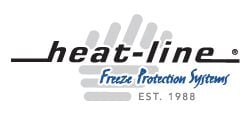Drilled or dug wells should be installed and designed so that the water supply pipe enters the well below the frost line. Therefore there is...
Preventing Well Riser Pipes from Freezing
Protecting Downspouts and Drains
When spring arrives and the snow starts to melt many people realize that they have left their gutters and downspouts unprotected. This leaves them to...
Melting Snow Around Your Heated Pipe?
When installing a Heat-Line brand heating cable system one of the most important steps is to ensure the system is properly insulated. An improperly insulated...
Retro-Line 90 Degree to Water
Hello and welcome to the December 2018 Heat-Line Vlog. The final vlog of 2018. The standard Retro-Line in pipe heating cable system from Heat-Line comes...
Heating Cable That is Safe for Plastic Pipes
Hello and welcome to the November 2018 Heat-Line Vlog. We have all heard of the horror stories created by using old school heat tapes and...
Retro-Line Ordering Information
Hello and welcome to the October 2018 Heat-Line Vlog. For applications where water supply pipes are not accessible Heat-Line offers the Retro-Line internal pipe freeze...
Making an Installation Serviceable
Hello and welcome to the September 2018 Heat-Line Vlog. Ideally it should whenever possible be common trade practice to install all heating cables in a...
Heating Cable Certifications
Hello and welcome to the August 2018 Heat-Line Vlog. When a product is certified the consumer is provided with an added level of protection. This...
Selecting The Proper Heat-Line Product
Hello and welcome to the July 2018 Heat-Line Vlog. Since inception in 1988 Heat-Line's product group has expanded from 1 to over 14 different solutions....
Insulating Your Heating Cable
Hello and welcome to the June 2018 Heat-Line Vlog. All Heat-Line brand heating cable systems employ self-regulating heating cable technology which has many advantages beyond...










